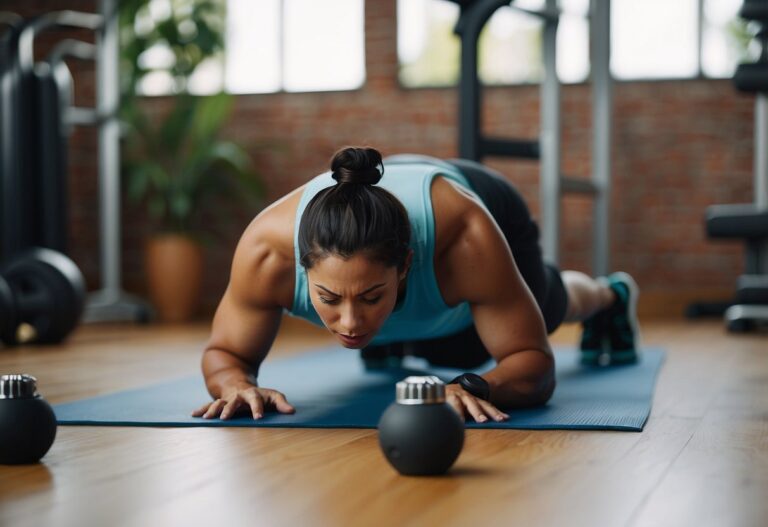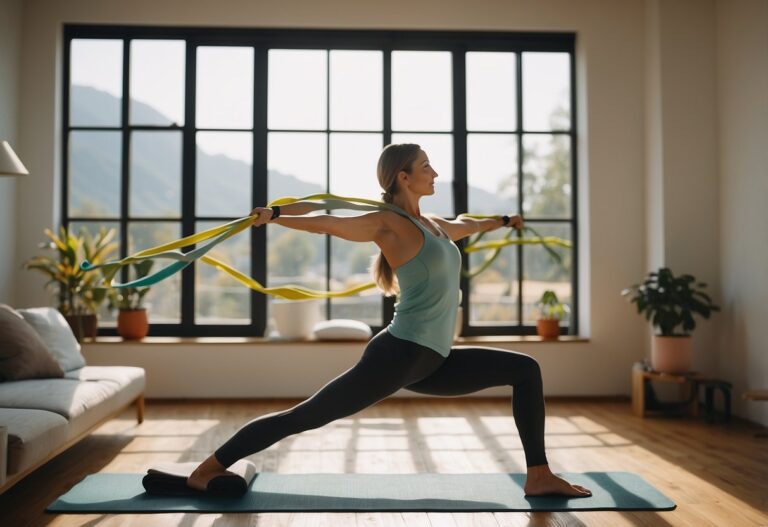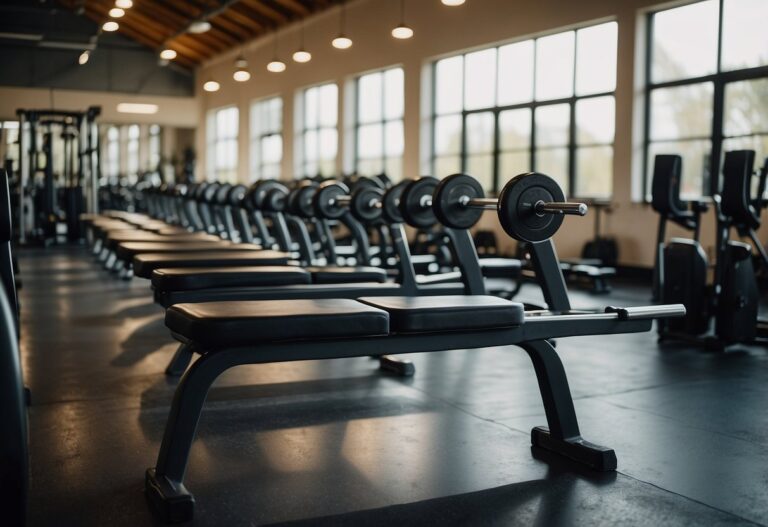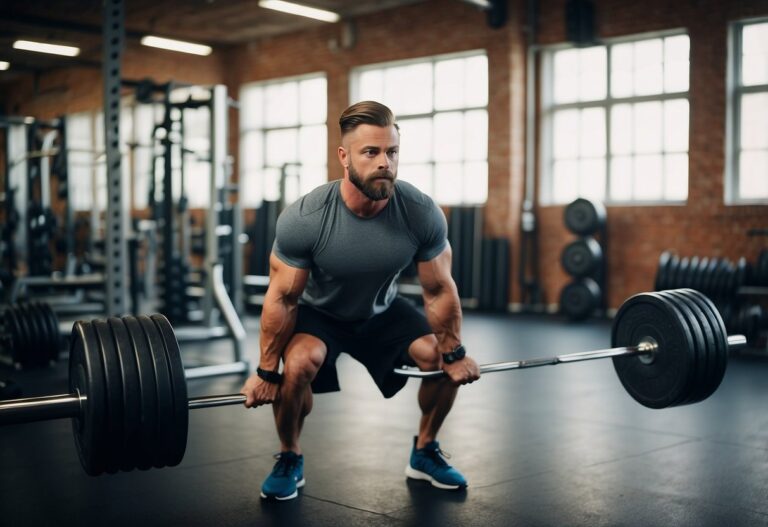When it comes to building a strong and impressive back, having the right workout tips can make a significant difference. Whether you’re just starting out or looking to enhance your existing routine, it’s essential to focus on exercises and techniques that effectively target your back muscles. How can you achieve the best results for strengthening your back?

By understanding the basics and incorporating a variety of exercises, you’ll be able to see noticeable improvements in your strength and muscle definition. It’s also important to remember that consistency and proper form play crucial roles in achieving your fitness goals. With this guide, you’ll find useful suggestions to enhance your back workout routine and make the most of your time at the gym.
Deadlifts
Deadlifts are a core exercise for building back strength. They target the lower back, glutes, and hamstrings. To start, place your feet shoulder-width apart under the barbell.
Keep your back straight and bend at the hips and knees. Grip the bar with both hands. Lift your chest and press through your heels, pulling the weight upwards.
When performing deadlifts, it’s important to choose a weight that allows you to maintain proper form. Avoid rounding your back to prevent injury.
Consider incorporating deadlifts at the start of your back workout. This way, you’ll have maximum energy and focus for this demanding exercise.
Pull-Ups
Pull-ups are one of the best exercises for building back muscles and improving your overall strength. When you grab the bar, make sure your hands are shoulder-width apart. This ensures you engage the right muscles effectively.
When you begin, focus on driving your elbows down. Imagine pulling the bar towards your chest. This trick can help engage your back muscles more efficiently.
For beginners, you might struggle with full pull-ups. Don’t worry! You can start by performing scapular pull-ups. Simply hang from the bar and tighten your shoulder blades. This movement builds the necessary strength.
Consistency is key. Aim for 3-4 sets of your pull-up routine, adjusting reps as needed. If you’re looking to gain muscle mass, try doing 4 sets of 10 reps. Leave a couple of reps in the tank for each set.
As you progress, try adding weight to your pull-ups. This can significantly increase strength. Remember, form is crucial, so avoid swinging your body or using momentum.
Pull-ups aren’t just about brute strength. They also enhance your coordination and body control. With dedication and practice, you’ll notice a remarkable improvement in your back and overall upper body strength.
Bent-Over Rows
Bent-over rows are a fantastic exercise for building your back muscles. They target your lats, traps, and rhomboids, giving you a strong and defined upper back.
When performing bent-over rows, keep your back straight and hinge at your hips. This helps prevent injury and ensures you’re working the right muscles.
Start with lighter weights to perfect your form. As you become more confident, gradually increase the weight. Remember to keep your elbows close to your body during the lift.
You can try different variations like the reverse grip bent-over row or the single arm dumbbell row to keep your workouts interesting and target different parts of your back.
Lat Pulldowns
Lat pulldowns are a fantastic exercise for strengthening your back. They focus on your latissimus dorsi, the large muscles that give your back its width.
You can try different variations to keep your workouts interesting. For example, a wide grip lat pulldown targets your upper lats more intensely.
A tall kneeling lat pulldown is another great variation. This exercise adds a core stability challenge and engages your glutes.
Form is key when doing lat pulldowns. Keep your chest up and your back slightly arched. Pull the bar down to chin level while aiming to drive your elbows down towards your lower back.
By mixing lat pulldown variations into your routine, you can target different parts of your back for a more balanced development.
Seated Cable Rows
Seated cable rows are a fantastic exercise for building your back muscles. This move mainly targets the latissimus dorsi, commonly known as the lats. It also works the rhomboid muscles between your shoulder blades and the trapezius muscles in your upper back.
To perform seated cable rows, sit upright with your knees slightly bent. Keep your back straight and pull the handle towards your torso. Make sure to squeeze your shoulder blades together. This helps maximise the benefits of the exercise.
Cable rows are beneficial because they minimise strain on your lower back. They provide constant tension, making them effective for muscle building. Including them in your routine can help you develop a strong, muscular back.
T-Bar Rows
T-Bar Rows are great for building a strong back. You can increase strength and add mass to your upper body. This exercise works your middle back, rear delts, and traps effectively.
To perform T-Bar Rows, stand over a barbell and grasp the handle. Keep your back straight and pull the weight towards your chest. You’ll feel your lats and upper back muscles engaging.
If your gym doesn’t have a T-Bar Row machine, you can use a barbell in a corner. Many people prefer this method as it’s simple and effective. Ensure good form to avoid injury and get the best results.
T-Bar Rows can be done early in your workout. Pairing them with chest exercises like the bench press can be beneficial. Aim to do 3-6 sets of 5-10 reps for optimal results.
Using T-Bar Rows, you can significantly improve your back strength and muscle definition. Make them a regular part of your routine and notice the difference in your performance and appearance.
Hyperextensions
Hyperextensions can be key in building a strong lower back. You do these by lying face down on a hyperextension bench with your feet securely in place. Lower your upper body towards the ground by bending at the hips.
Next, you raise your body back up until your hips and waist are extended. This exercise targets your lower back, glutes, and hamstrings.
To make it tougher, try holding a weight plate at your chest. Hyperextensions are useful because they directly strengthen muscles important for posture and core stability. They can also support more intense exercises like squats by making your lower back stronger.
Face Pulls
Face pulls are excellent for targeting your upper back and shoulder muscles. They’re simple but effective. You can do them using a cable machine or resistance bands. These pulls focus on your rear deltoids, trapezius, and rotator cuffs.
Start by setting the height of the cable machine to eye level. Grip the rope attachment with both hands. Step back until your arms are fully extended. Lean back slightly to stabilise yourself.
As you pull the rope towards your face, keep your elbows high and parallel to the ground. This ensures proper muscle engagement. Rotate your wrists so your palms face forward at the end of the movement.
Performing face pulls regularly can improve your posture and shoulder health. Aim for sets of 10-15 reps. This exercise helps balance out the strength in your shoulders, which is crucial if you do a lot of front-focused workouts like bench presses.
Reverse Flyes
Reverse flyes are excellent for training your upper back and shoulders. This move helps improve posture and build strength in these areas.
To perform a reverse fly, stand with your feet shoulder-width apart, holding dumbbells. Bend your knees slightly and hinge forward at your hips, keeping your back straight. Raise your arms out to the sides until parallel to the floor.
Always keep your core engaged during this exercise. If standing feels difficult, try the seated reverse fly. This variation helps you maintain stability and prevents straining your lower back.
Remember, start with lighter weights to focus on form and prevent injury. Happy lifting!
Single-Arm Dumbbell Rows
Single-arm dumbbell rows are great for building back strength and improving muscle mass.
To get started, stand next to a weight bench. Place one knee and hand on the bench. Hold the dumbbell in your other hand. Keep your back flat and bend at the waist.
Pull the dumbbell towards your hip by bending your elbow. Focus on squeezing your shoulder blade at the top.
Try different weights and repetitions. For strength, use heavy weights and fewer reps. For muscle building, choose lighter weights with more reps.
Consistency is key. Include single-arm dumbbell rows in your routine to see progress. Whether you’re a beginner or experienced, this move is beneficial.
Proper Form and Technique
Maintaining proper form and technique during your back workouts is crucial for achieving effective results and preventing injuries. Focusing on correct posture and avoiding common mistakes will help you build a stronger, healthier back.
Common Mistakes to Avoid
One common mistake is rounding your back during exercises like deadlifts and rows. This can lead to lower back injuries. Always keep your spine neutral and avoid hunching your shoulders.
Another mistake is using too much weight. It’s tempting to lift heavier, but proper form suffers when the weight is too much. Start with a manageable weight and increase slowly as your strength improves.
People often neglect warming up before starting their workout. Skipping this step can make muscles stiffer and more prone to injury. Spend a few minutes doing light cardio and dynamic stretches to prepare your back muscles.
Breathing is also important. Don’t hold your breath while lifting weights. Breathe out as you lift and in as you lower the weight. This helps maintain core stability and provides oxygen to your muscles.
Tips for Maintaining Good Posture
Focus on engaging your core. A strong core helps stabilise your spine and reduces the risk of injury. Imagine pulling your belly button towards your spine to activate your deep core muscles.
Keep your shoulders back and down. This helps prevent slouching and maintains a neutral spine. Think about tucking your shoulder blades into your back pockets.
Use a mirror to check your form. It provides visual feedback, helping you correct any posture issues immediately.
Incorporate exercises like planks and bird-dogs that promote good posture and strengthen the muscles supporting your spine. These exercises emphasise stability and balance, improving your overall posture.
Stay mindful of your body’s alignment throughout your workout, adjusting as needed to maintain proper form.
Key Muscle Groups
When working out your back, it’s important to focus on the key muscle groups to build strength and avoid injury. Each muscle group has specific exercises that can help you achieve a balanced and powerful back.
Upper Back Muscles
The upper back includes the latissimus dorsi (lats), trapezius (traps), and rhomboids. These muscles are essential for movements that involve pulling and lifting.
The lats are the broadest muscles of the back. They help in pulling your arms down and towards your body, such as in pull-ups and lat pulldowns. Trapezius muscles cover the upper part of the back and neck, assisting in shoulder movements and stabilising the neck. Lastly, the rhomboids, located between your shoulder blades, help retract the scapula, allowing for a better posture.
To effectively target these muscles, incorporate exercises like pull-ups, bent-over rows, and face pulls into your routine. These exercises can help build a V-shaped back, improving your overall strength and appearance.
Lower Back Muscles
The lower back is primarily composed of the erector spinae, a group of muscles that run along the spine from the neck to the lower back, and the quadratus lumborum, which is located in the lower part of the back on either side of the spine.
The erector spinae are key in extending and rotating the spine. They support your posture and are heavily utilised in movements like deadlifts and back extensions. The quadratus lumborum stabilises the lower back and aids in side bending.
Incorporating exercises such as deadlifts, hyperextensions, and good mornings can significantly strengthen these muscles. By focusing on your lower back, you help prevent injuries and improve your overall functional strength.
These exercises, performed with proper form and consistency, can lead to a strong and resilient back, supporting you in various physical activities and daily tasks.







